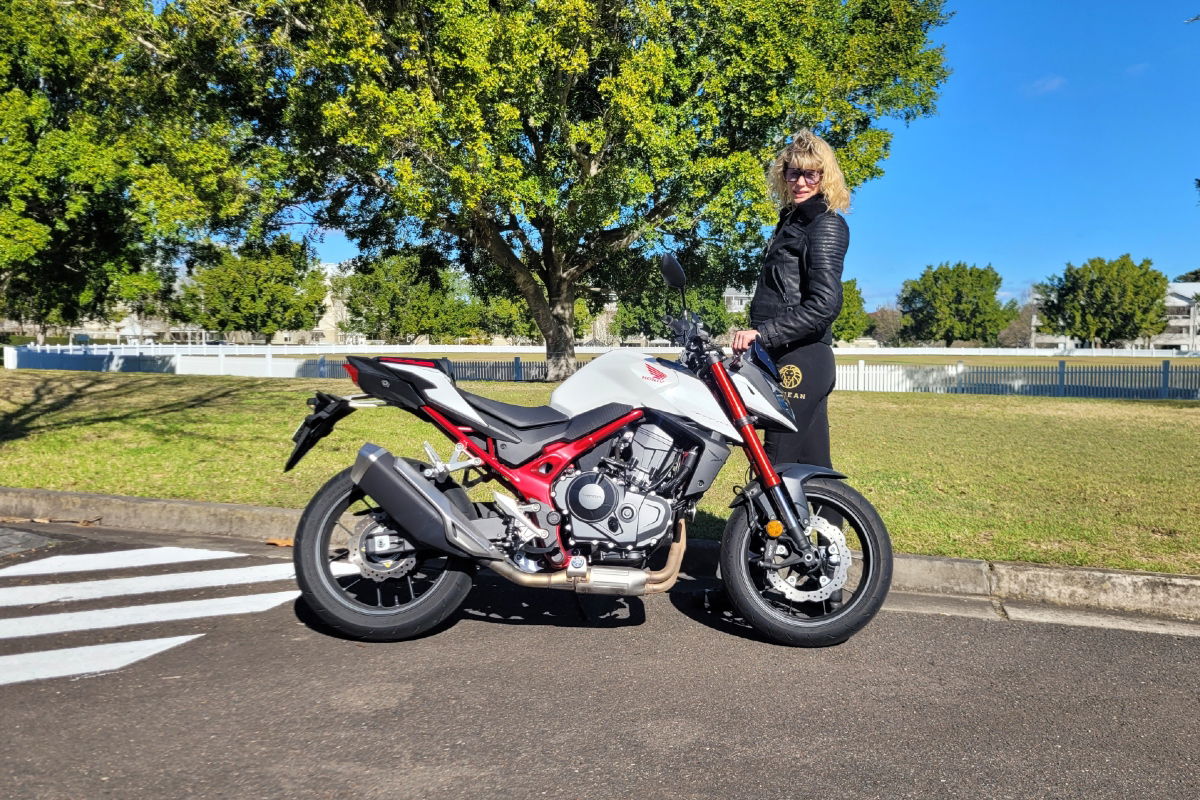
Honda Hornet – let’s start with name. I love an iteration and Honda Hornet just rolls off the tongue.
I have had this little beauty (actually it’s not so little at 750cc) in my garage for a few months and neither my partner nor I have been in any rush to send it back.
This is not the first time the Honda Hornet has graced planet earth. It first launched in 1998, as the Honda Hornet CB600F and was a hugely popular motorcycle in the UK and Europe. Apparently racers loved the fact it was easy to set up, had a fun engine, and was cheap to run. New riders found it easy to ride and unintimidating, stable and predictable.
So with it’s already existent street credit, there was plenty of buzz around the new rendition of the Hornet. The middleweight naked category is highly competitive, it would have to be a banger to stand out amongst the rest. So does it? Read on…
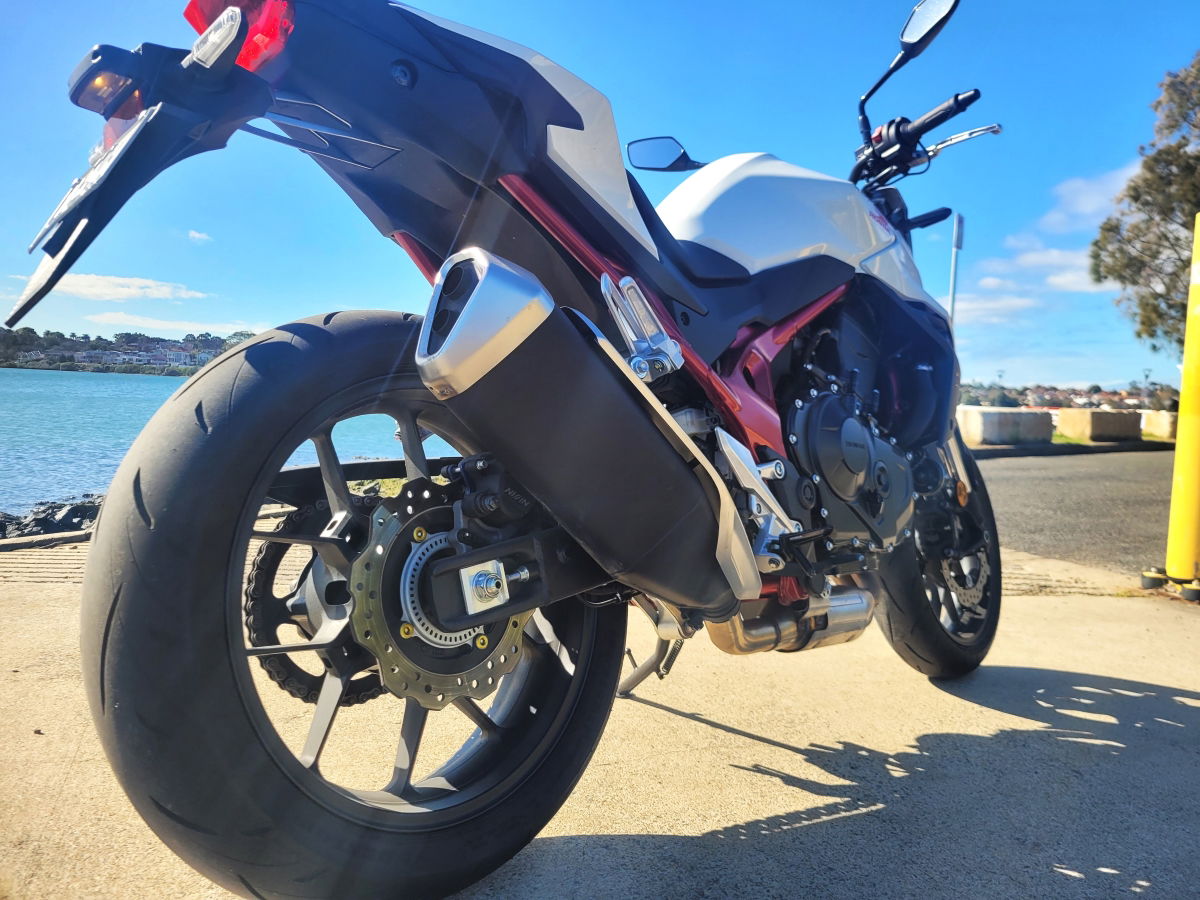
Let’s start with the Hornet’s size – engine capacity of 750cc is a pretty sweet goldilocks spot in my mind – not too big, not too small. But also its overall presence and vibe, height and ergonomics. I’m 5’11 and my partner is 6-ft and ergonomically, we agreed we could spend many hours on this bike (not two up, we’re too big!). But that is not to say you have to be tall to ride it. For as tall as it looks, a far shorter frame would be very much at home. The seat height is under what you would expect at 795mm. This is a nice surprise, it looks like more of a top heavy monster than it is.
What struck me was that as comfortable as it rides each day to work, blip it up to Sport mode and the power delivery significantly changes to turn it into weekend, send-it-up-the-twisties, see-your-mates mode. Officially, it’s modes are Sport, Standard and Rain which you can set and save in the customisable USER mode which I’d loosely consider as a fourth mode. Here you can alter the elements within Rain, Sport, Standard between three levels of Engine Power (EP), Engine Brake (EB), and Honda Selectable Torque Control (HSTC) with integrated wheelie control.
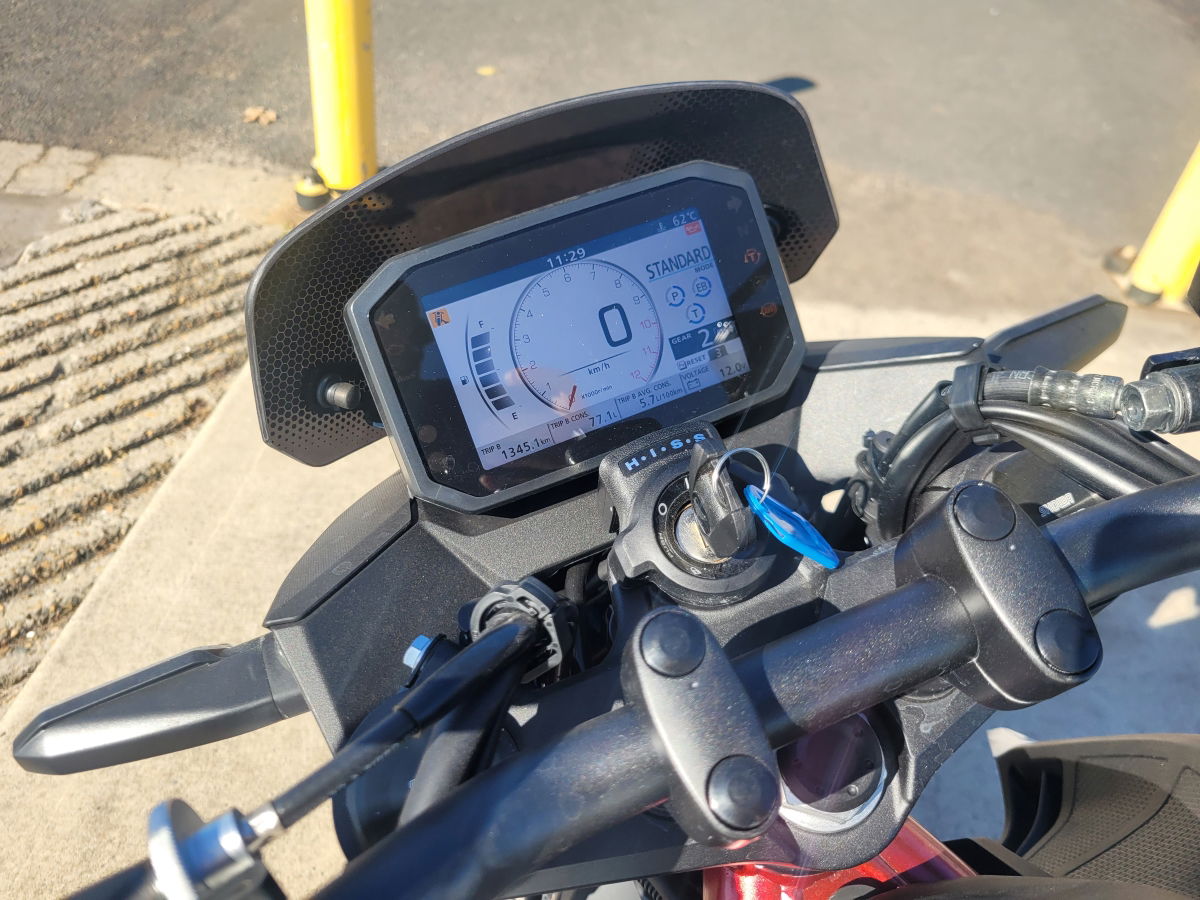
The Hornet’s 5.0-inch TFT colour screen is uncomplicated and informative, displaying as much detail as any rider needs. Analogue or bar speed/rpm, ride mode with details, gear and customisable shift-up point on the tachometer. I personally enjoy the old saying ‘keep it simple stupid’ when it comes to bikes. Too much moto tech is wasted on most, unless you are a MotoGP test rider or an amateur racer. To be fair, aren’t we all just one track day away from being amateur racers?!
The Hornet CB750 does come with the new Honda voice control app (Honda Smartphone Voice Control System – HVCS), that can link the dash, mobile and comms system. Can’t say I tried it, but it sounds very handy.
A welcome feature is the self cancelling indicators (for the sake of surrounding traffic, remember this when you hop back on a non-self cancelling indicator moto, speaking from personal experience) and the emergency stop system. This system warns those behind you that you are hard on the brakes by flashing the indicators. You just have to hope they know what this erratic flashing means when they see it!
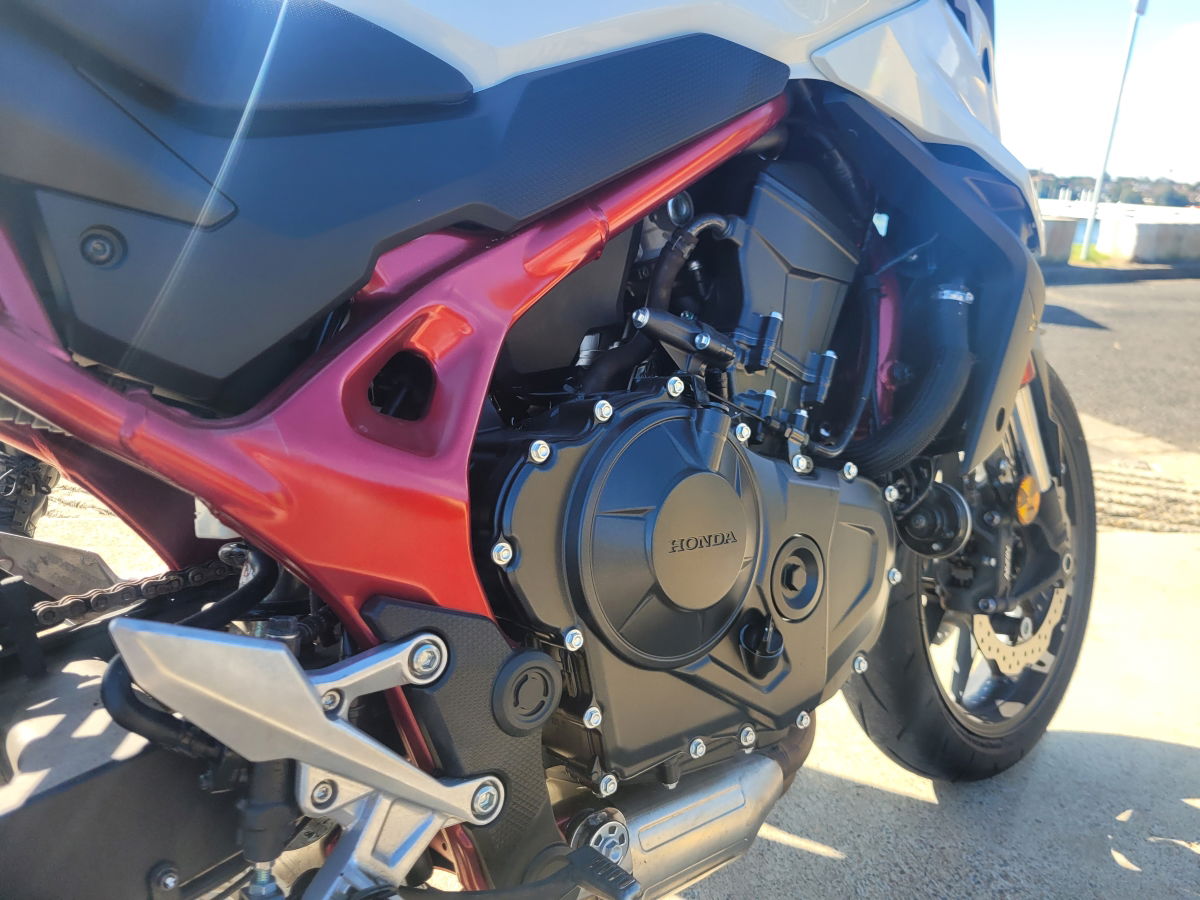
As for how it rides, the Hornet is a delightfully torquey demon with it’s all new parallel twin engine receiving rave reviews, packing more power into a smaller box. With 90 horsepower at 9,500rpm and 75Nm at 7,250rpm torque providing an exciting power delivery with an occasional, healthy twitch at the top end but also that everyday mid-range stable, smooth, reliable power that will get you to work and back.
I must make note of the Hornets appearance – it is a genuinely handsome Japanese urban street bike. It blew my mind how many heads it turned. ‘Did these people also know the value in this motorcycle,’ I asked myself? Surely not. I don’t know that the photos do it justice. In real life it has far more presence. Clean, modern, angular lines make the Hornet look mildly mean yet still sexy and approachable. Colour options are Pearl Jasmine White, Graphite Black.
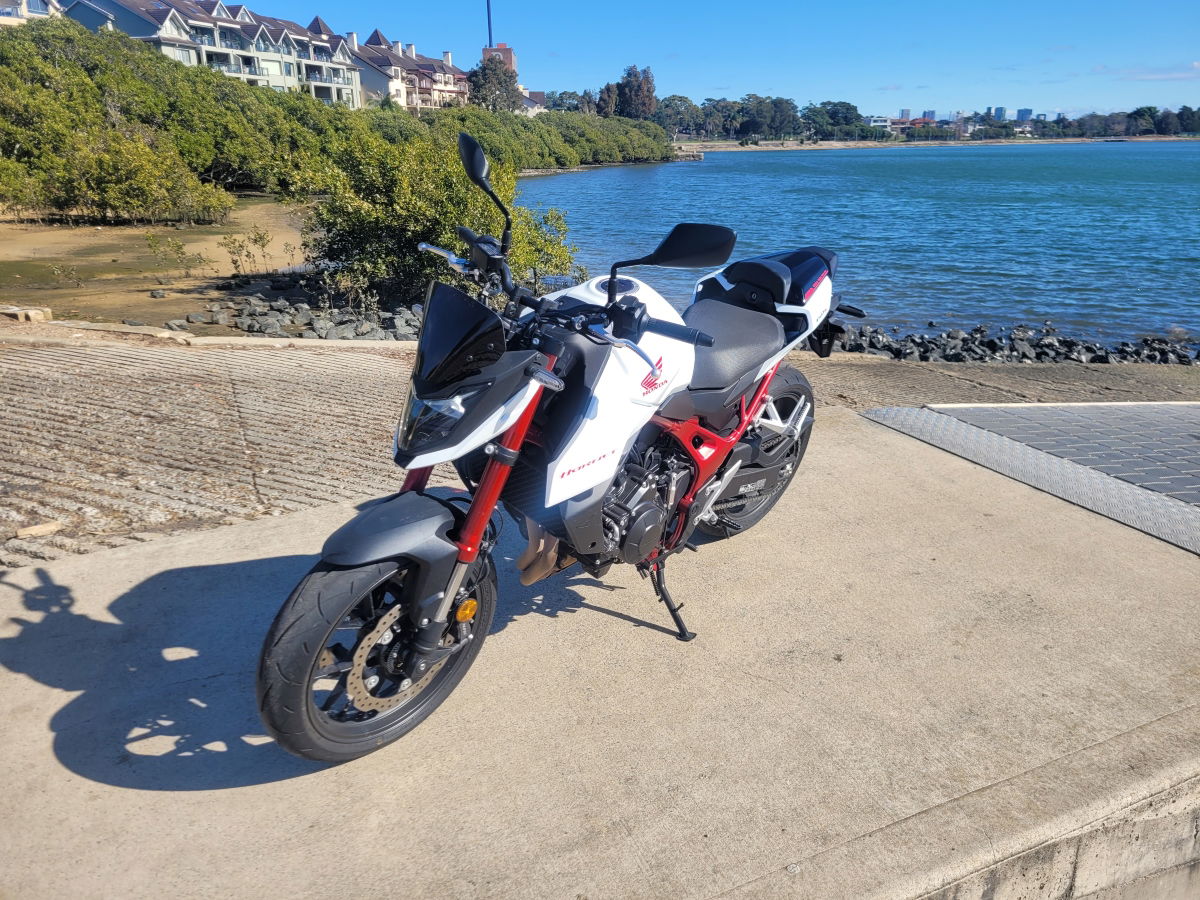
You can level up with these three accessory packs
- Style Pack ($950) – Skid pad, frame slider, grip ends, aluminum handlebar holder, wheel stripe
- Sports Pack ($990) – Quick Shifter, meter visor, rider steps, seat cowl
- Touring Pack ($1,870) – Side bags & attachments, rear seat bags & attachments, 3L tank bag, protective film
If you’re upgrading anything for your riding comfort, I would recommend you go with at least the quick shifter which will set you back $397 (plus fitment). You can also get heated grips – hello Tassie, hello Melbourne.
So there you have it, my take on the Honda Hornet. From $12,099 plus on road costs (approx $13,450 ride away) you’re going to have trouble finding better bang for your buck amongst its competition. But don’t believe me, Spring is almost here so get on one and go for a test fang!
Disclosure: Kate Peck is a Honda motorcycle brand ambassador (but appreciates that quality knows no logo and loves all moto children).












Discussion about this post